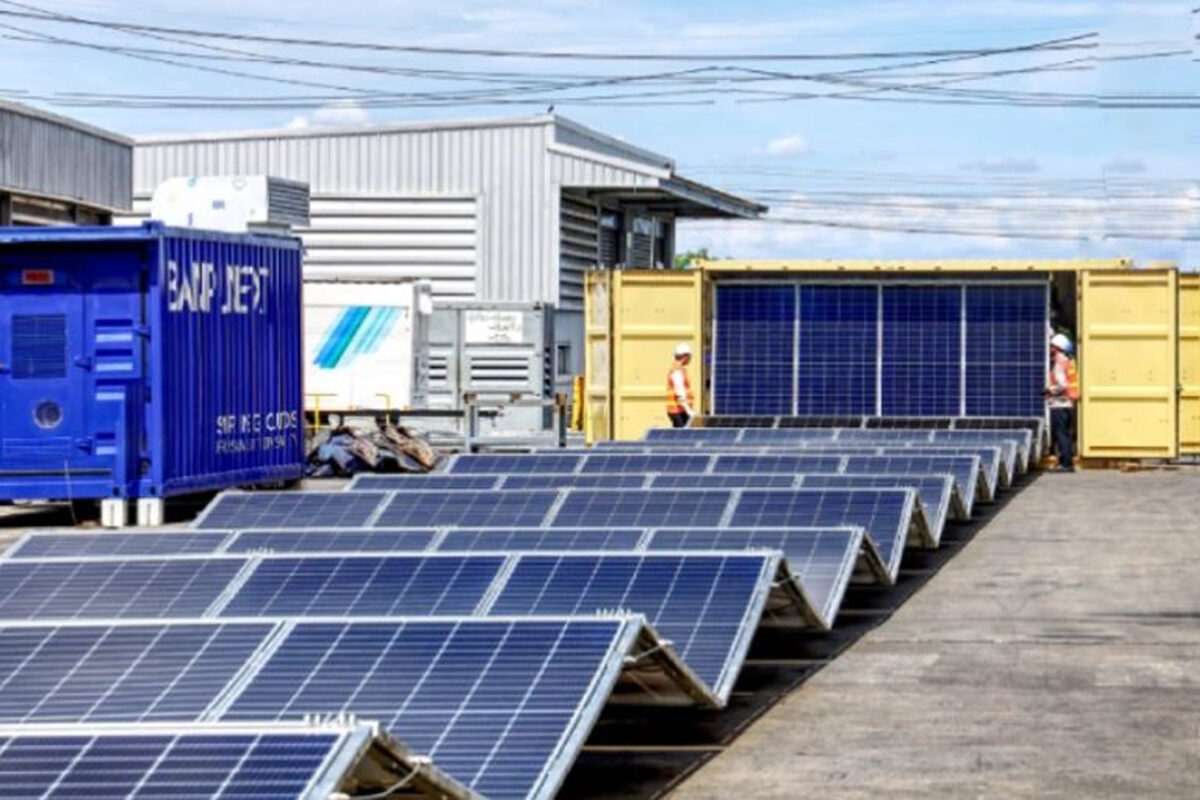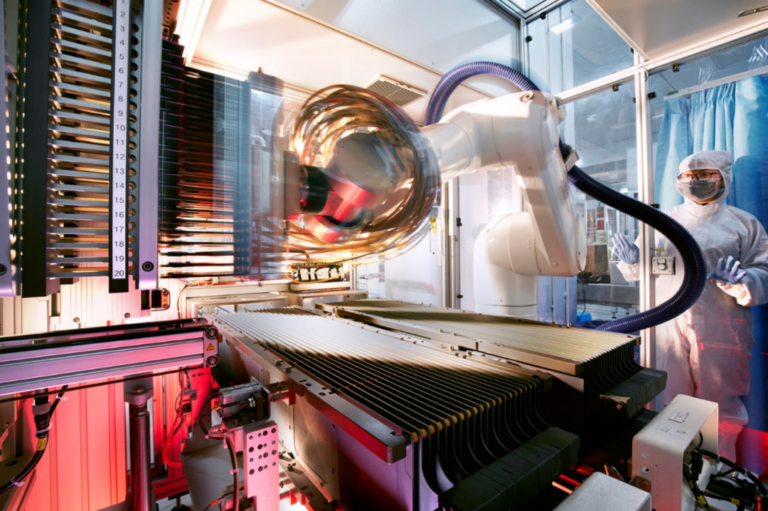Chinese PV module manufacturer Trina Solar has announced that it has achieved an energy conversion efficiency of 25.44% in an n-type fully passivated heterojunction (HJT) solar panel.
The CalLab of the Fraunhofer Institute for Solar Energy Systems (Fraunhofer ISE) independently verified the result, which is a world record for a crystalline silicon solar panel with a large surface area and contact structures on the front and back.
Trina said this achievement represents her 30th world record for solar efficiency and sets a new benchmark for the PV industry. The company added that the result beats the previous record of 25.40% of back contact (BC) modules set by Chinese competitor Longi.
The module was developed at Trina’s National Key Laboratory of PV Science and Technology in China. It features 210mm x 105mm industrial phosphor-doped n-type silicon wafers, which combine advanced passivation techniques, backside HJT technology and multi-frequency RF processes. Key innovations include light-trapping structures, ultra-dense encapsulation and low-resistance interconnects, resulting in superior optical and electrical performance, the company said.
“This record is a testament to our relentless focus on research and innovation,” said Gao Jifan, CEO and Chairman of Trina. “We will continue to invest in the development of passivated contact cells and modules to maintain our leadership in solar technology.”
This achievement underlines Trina’s commitment to HJT technology, which has gained ground as a high-efficiency alternative to traditional TOPCon and PERC technologies. Over the past four months, Trina has set two world records for TOPCon cell efficiency and one for HJT cells.
In December, it achieved a world record of 27.08% efficiency for a fully passivated n-type HJT device and the Institute for Solar Energy Research in Hamelin (ISFH CalTEC) verified the result. Earlier in October it announced an efficiency of 25.9% for a large-area industrial TOPCon solar cell, and a month later it achieved an efficiency of 26.58% for the same cell technology, with both results certified by ISFH CalTeC.
This content is copyrighted and may not be reused. If you would like to collaborate with us and reuse some of our content, please contact: editors@pv-magazine.com.
Popular content



